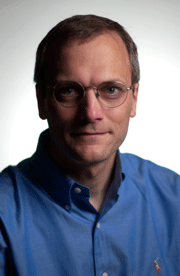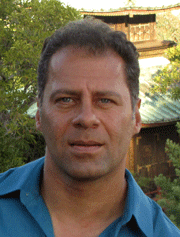GlobalSIP 2013 Symposium on:
Millimeter Wave Imaging and Communications
[Download the PDF Call for Papers]
The emergence of low cost high performance CMOS technology has opened a new perspective in the development of millimeter wave (mmWave) systems. With availability of ultra-wide bandwidths, emerging millimeter wave technology has the potential to impact our lives with applications ranging from imaging, sensing, automotive radars, security, biology, short-range, and ultra-high speed wireless data transmission. For example, the wavelength of mmWave frequencies is small enough to achieve a useful resolution for many imaging applications. Their shorter wavelength allows for greatly reduced equipment and antenna size. There are certainly many opportunities and open problems in mmWave systems for researchers. The signal processing community is uniquely positioned to benefit from deeper understanding of mmWave circuits and systems. The objective of this symposium is to bring academic and industrial researchers from both mmWave silicon based circuit and signal processing communities together in an effort to identify and discuss the major technical challenges and recent results in millimeter wave systems. Researchers and practitioners working in this area are expected to take this opportunity to discuss and express their views on the current trends, challenges, and state of the art solutions addressing various issues in mmWave systems.Submissions of at most 4 pages in two-column IEEE format are welcome on topics including:
- Millimeter Wave Coherent Imaging and Signal Processing
- Holographic Millimeter-wave Imaging, Automotive Radars, and Remote Sensing
- Compressive Sensing in Radars and Imaging
- MIMO Radars
- Millimeter Phased Arrays
- Quasi-Optical Techniques
- THz Imaging
- Millimeter Wave Communication Systems and Applications
- Signal Processing Techniques for Impairments in Millimeter Wave Systems
Keynote Speakers

Gregory Wornell, Massachusetts Institute of Technology, Intelligent Co-Design: Can Digitally-Enhanced Antenna Array Architectures Enable New Applications?
With CMOS circuits now able to operate at millimeter wave frequencies, there is the potential to develop new low-cost coherent imaging technology that can enable a host of new applications. The degree to which this potential can be realized depends on how effectively some of the associated new technical challenges can be met. I will discuss some examples of these challenges, and describe a viewpoint that may be useful in addressing them—one that emphasizes tighter interaction between the digital and analog aspects of the system design and signal processing. As illustrations, I'll share a couple of recent but divergent examples of architectures inspired by this framework of thinking, including dense delta-sigma arrays, and sparse multi-coset ones.
Gregory Wornell received the B.A.Sc. degree from the University of British Columbia, Canada, and the S.M. and Ph.D. degrees from the Massachusetts Institute of Technology, all in electrical engineering and computer science, in 1985, 1987 and 1991, respectively.
Since 1991 he has been on the faculty at MIT, where he is the Sumitomo Professor of Engineering in the department of Electrical Engineering and Computer Science. At MIT he leads the Signals, Information, and Algorithms Laboratory within the Research Laboratory of Electronics. He is also chair of Graduate Area I (Information and System Science, Electronic and Photonic Systems, and Physical Science and Nanotechnology) within the EECS department's doctoral program. He has held visiting appointments at the former AT&T Bell Laboratories, Murray Hill, NJ, the University of California, Berkeley, CA, and Hewlett-Packard Laboratories, Palo Alto, CA.
His research interests and publications span the areas of signal processing, statistical inference, digital communication, and information theory, and include algorithms and architectures for wireless and sensor networks, multimedia applications, imaging systems, and aspects of computational biology and neuroscience. He has been involved in the Signal Processing and Information Theory societies of the IEEE in a variety of capacities, and maintains a number of close industrial relationships and activities. He has won a number of awards for both his research and teaching, and is an IEEE Fellow.

Payam Heydari, University of California, Irvine, Fully Integrated Millimeter-Wave Imaging in Silicon: Challenges and Opportunities
The millimeter-wave (MMW) frequency range from 30-300 GHz has been an active area of research in the field of active and passive imaging and sensing for several decades. Applications such as concealed weapon detection, airplane navigation in low visibility conditions, medical imaging, and satellite surveillance have been targeted for imaging systems at these frequencies. At MMW frequencies, black body radiation is emitted at a nearly constant power spectral density (i.e., white spectrum), which is directly proportional to the temperature and emissivity of the radiating object. In recent years, silicon technologies have achieved the required imaging system performance that had previously only been obtained using III-V technologies in a multi-chip module based system. This plenary talk will provide an overview of latest advances in silicon-based imaging integrated circuit design. The talk will then focus on three fully integrated imaging receivers in silicon technologies that have been designed, developed, and measured in Nanoscale Communication Integrated Circuits (NCIC) Labs at the University of California.
Payam Heydari is currently a Distinguished Professor of Electrical Engineering and Faculty Chair Secretary of the School of Engineering at the University of California, Irvine.
Dr. Heydari is the co-recipient of the 2009 Business Plan Competition First Place Prize Award and Best Concept Paper Award both from Paul Merage School of Business at UC-Irvine. He is the recipient of the 2010 Faculty of the Year Award from UC-Irvine's Engineering Student Council (ECS), the 2009 School of Engineering Fariborz Maseeh Best Faculty Research Award, the 2007 IEEE Circuits and Systems Society Guillemin-Cauer Award, the2005 IEEE Circuits and Systems Society Darlington Award, the 2005National Science Foundation (NSF) CAREER Award, the 2005 Henry Samueli School of Engineering Teaching Excellence Award, and the Best Paper Award at the 2000 IEEE Int'l Conference on Computer Design (ICCD). He was recognized as the 2004 Outstanding Faculty in the EECS Department of the University of California, Irvine. His research on novel low-power multi-purpose multi-antenna RF front-ends received the Low-Power Design Contest Award at the 2008 IEEE Int'l Symposium on Low-Power Electronics and Design (ISLPED).
Dr. Heydari is the Guest Editor of IEEE JOURNAL OF SOLID-STATE CIRCUITS (JSSC). He currently serves on the Technical Program Committees of Compound Semiconductor IC Symposium (CSICS),and ISLPED. He served as the Associate Editor of IEEE TRANS. ON CIRCUITS AND SYSTEMS - I from 2006 to 2008. He was the Local Arrangement Chair of the 2004-2005 ISLPED, and the Student Design Contest Judge for the 2003 DAC/ISSCC Design Contest Award. He served on the Technical Program Committees of andInt'l Symposium on Quality Electronic Design (ISQED), IEEE Design and Test in Europe (DATE) and International Symposium on Physical Design (ISPD). He is the director of the Nanoscale Communication IC (NCIC) Labs.
His research interests include design and analysis of THz/millimeter-wave/RF integrated circuits. He has published papers in premier conferences and journals on integrated circuit design including JSSC, ISSCC, CICC, and RFIC Symposium. Results of the research in the NCIC Labs have appeared in more than 110 peer-reviewed journal and conference papers.
Paper Submission
Submit papers of at most 4 pages in two-column IEEE format through the GlobalSIP website at http://www.ieeeglobalsip.org/Papers.asp. All papers (contributed and invited) will be presented as posters.
Important Dates
| Paper Submission Deadline | June 15, 2013 |
| Review Results Announce | July 30, 2013 |
| Camera-Ready Papers Due | September 7, 2013 |
Organizing Committee
Technical Program Committee
Haroun Baher, Texas Instruments
Debabani Choudhury, Intel
Nuria Llombart, TU Delft, The Netherlands
Caner Ozdemir, Mersin University, Turkey
Lee Swindlehurst, UC Irvine
M. Saquib, University of Texas at Dallas
Moeness Amin, Villanova University
Brian Floyd, NC State University
Magda O. El-Shenawee, University of Arkansas
Murtaza Ali, Texas Instruments
Brian Ginsburg, Texas Instruments